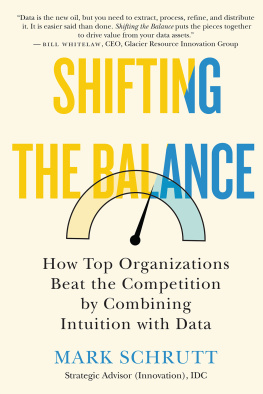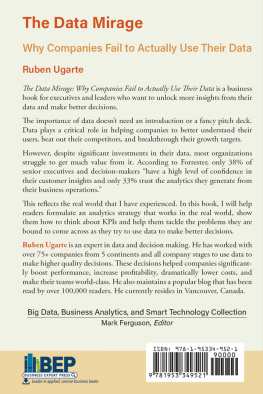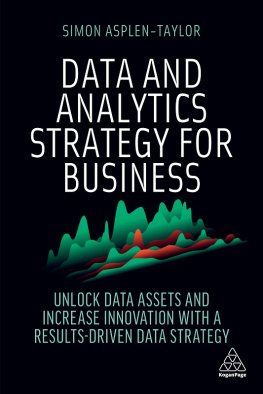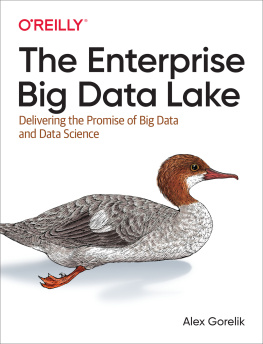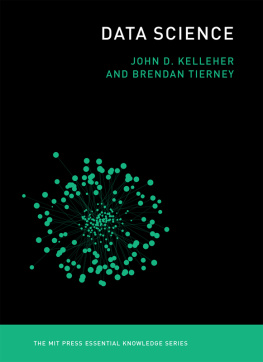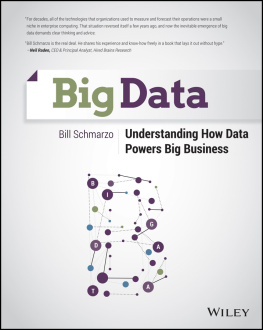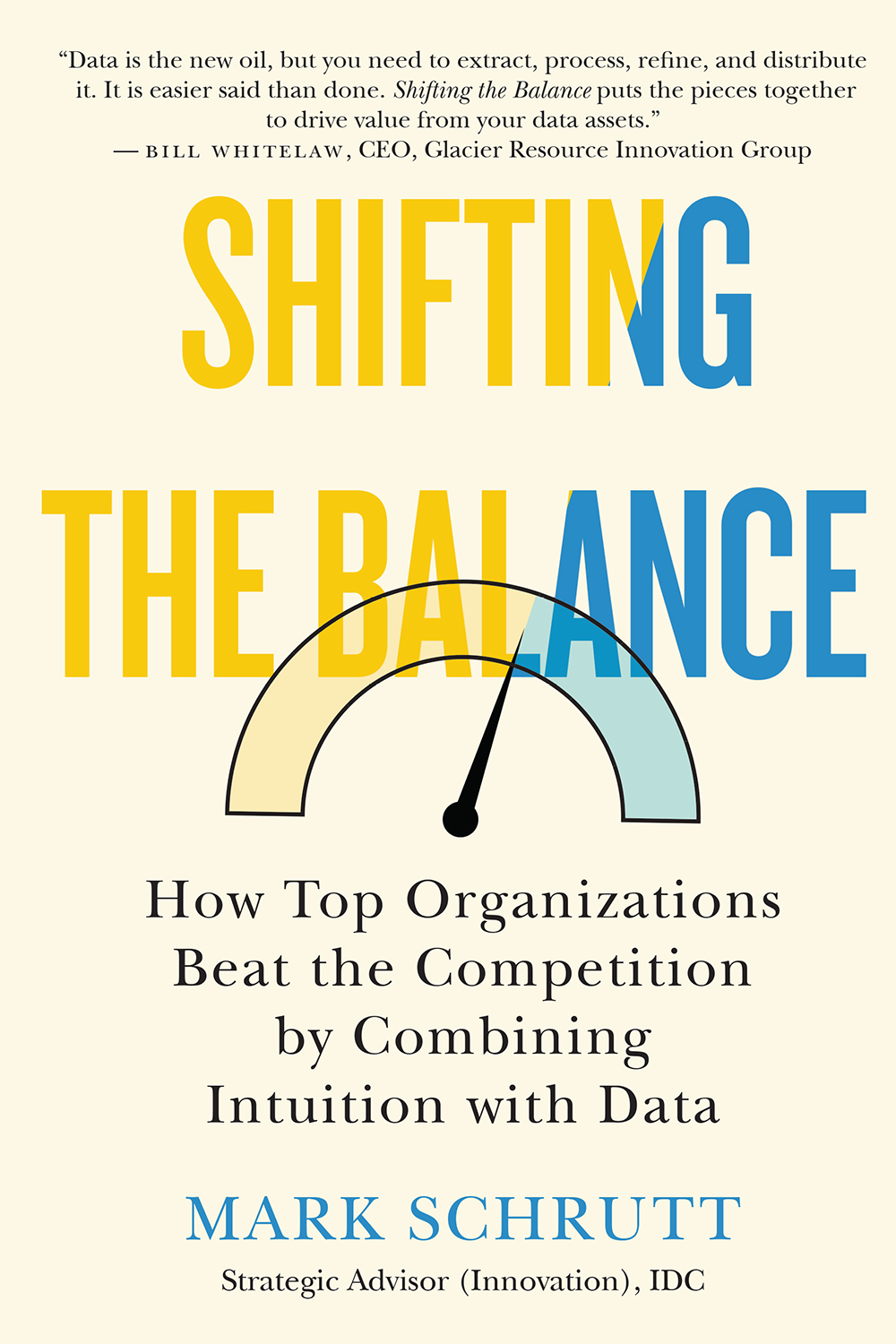I dedicate this to my daughter, Lily. I love you.
To my partner, Ellen, thank you for inspiring, challenging, and supporting me. All those countless hours of reading this book did lead to something.
I also want to thank IDC, which encouraged me to ask questions and look at data. IDC provided me with the means to dig deep into areas that ultimately have shaped the guidance we provide to some of the leading companies in the world. The door always seems to remain open at IDC.
And finally, to my extended family throughout the U.S. and Canada: I hope this book does you proud.
Foreword
Data has always driven the technology research industry. Data and analytics are also at the intersection of our mission at IDC to create data-driven insight for our clients to enhance decision making.
2021 is very different from any other time in my 20-plus years in the industry. The enhanced ability to collect and source new data provides us with the opportunity to pursue incredible new business opportunities. The value of data in corporate planning has never been more critical than it is now. I see it in how high-tech firms operate, employing their digital assets to drive scale. Still, while technology executives may be leaders in the data-driven approach, I see far too many decisions made without the benefit of data. With better data, we can minimize risk and ground strategies in fact and reality.
Ironically, our research shows that intuition still drives most executive decisions, even though the appetite for data is greater today than ever before. However, I believe we are witnessing a significant shift in decision-making from intuition towards data. Leading companies are now moving from using historical data for planning towards leveraging real-time, predictive information to make better and faster decisions.
The timing of Shifting the Balance could not be better. Businesses are moving from having not enough data to having too much. The problem is still: How do we drive insight from this information? The future will draw businesses and society further into the digital economy, and Marks book provides critical guidance on how people and analytics can work together. Shifting the Balance makes the case that in todays complex and uncertain world, the role of humans in decision-making is more critical than ever. But to achieve optimal results, we cannot do it on our own. It is too easy to make mistakes when you solely trust your gut or believe you and your team have it all figured out. We need checks and balances and software to assist us in optimizing decisions.
The move to a data-driven company is not just about technology, even though that is the focus of our research at IDC. Technology might be the easiest part, but many smaller, detailed steps and organizational processes need to be aligned to make the possible a reality. Shifting the Balance covers topics such as developing a data strategy, governance, and where to use analytics for decision-making. Equally important, we as leaders need to set the tone and encourage curiosity and collaboration. These topics are the foundational pieces of this book. In the long run, they will likely be as important as how much real-time business and customer data you can capture and analyze. Marks book also powerfully brings issues such as ethics and bias into sharper focus.
Shifting the Balance is an invaluable guide for what I believe is an inevitable future where better decisions are made based on facts and where real-time data-driven companies will create overwhelming competitive barriers.
Lars Goransson, SVP and Managing Director, IDC Canada, October 2020
Introduction
What if you had the data and information you always wanted and knew what to do with it? What if you could predict upcoming market trends, knew the optimum point to price products, understood the impact of weather on retail shopping before deciding to open a new store, and were sure a certain pitcher would throw inside on a three-and-two pitch? You might change your decision or, at the very least, use these data points to confirm the path you were about to take. Without data, youre moving forward in darkness. While data doesnt guarantee good outcomes regardless of how much you have or how good it is its a whole lot better than trusting the future of your business to pure instinct.
Over 80 percent of executives believe their business will be disrupted by digital technology in the next two years. The same percentage of leaders see data and analytics as the key to their corporate survival. I have been affiliated with International Data Corporation for over a dozen years as a vice-president of research and currently as a strategic advisor in their Canadian offices. Data is the middle name of our corporation and has been since it was founded in the mid-60s. We like to ask all sorts of business and technology questions in surveys and interviews, such as how business leaders use data in decision-making. For example, more than 80 percent of executives believe that data should be at the center of their strategy, yet most are uncomfortable with using data in decision-making and think analytics is too complex.
Admittedly, data can be difficult to access and isnt always current. Numbers on their own tell you little without the effort to drive insight from data. It is not easy, but some executives stand up during meetings and rattle off statistics about growth and market share. There are industries built by data, such as financial services, and those that have been transformed by data, like entertainment with Netflix and travel with Airbnb. Data must play a big role in business decisions but that doesnt mean it currently does.
The sobering reality is that an IDC survey on decision-making in the winter of 2019 found that barely 30 percent of business decisions are made primarily on data. The number dropped to only 20 percent when corporate management was asked about developing strategies and operational decisions. Gut and intuition may have worked for decades, but no longer cut it when customer demands shift with the next tweet or Instagram post, and your industry can be fundamentally changed within a few quarters.
What prompted IDCs research on decision-making in the first place was a meeting I had in the spring of 2018 with the newly hired executive vice-president of digital at Canadas largest newspaper. Having just completed research on corporation innovation and developing a blueprint for the growing trend of creating innovation centers, I had moved my attention towards disruption and how digital technologies were changing industries. I wanted to understand if disruption moved in patterns or phases, from when it may be only a speck on the radar with no impact on numbers, to the point where you are preparing for bankruptcy like Blockbuster and Kodak. I also wanted to understand whether disruption affected different kinds of companies in distinct ways. The answer, I found, is yes. Even a company involved in two or more sectors will see different changes and at particular paces.
The news industry provided me with a perfect proving ground for this research. Companies like the New York Times Company, Gannett, and Torstar Corporation gave me a vast arena to investigate change. The newspaper executive described the painful experience that began at the paper just at the turn of the century through to his arrival, as well as a whole new slate of management, in 2016. Over these 15 years, the newspaper had gone from 5.5 million subscribers to under 3 million, a 15 percent decline in market share for advertising spend, and a market capitalization that once surpassed $2.3 billion to the point where it was trading as a penny stock. What he described were stages of market disruption that the travel and home entertainment industries had gone through and were beginning to rewrite the rules in other sectors. One of the key lessons about disruption is that it happens much faster than it used to.

